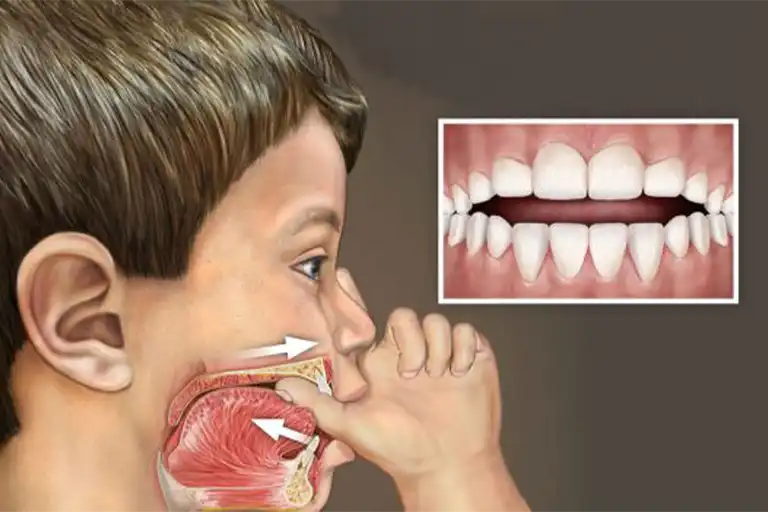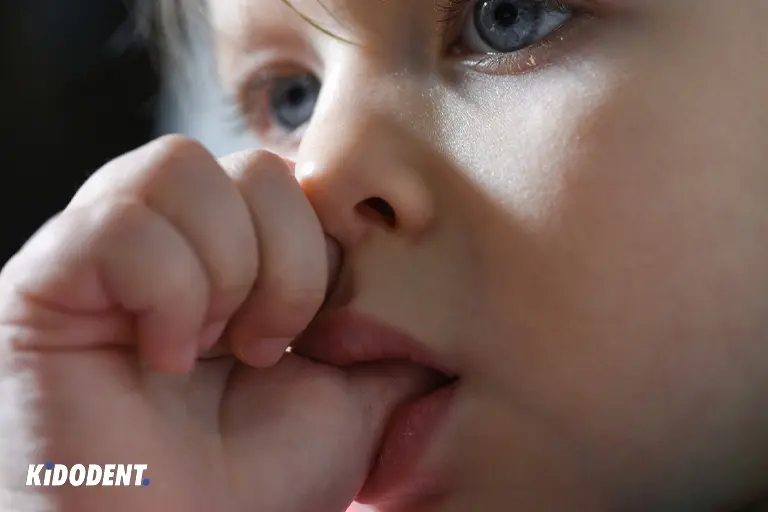Thumb sucking is a common oral habit that young children experience. Many children quit sucking their thumb or pacifiers on their own, and as they age. However, some children may continue the habit for more years. This can lead to teeth irregularities and changes in the appearance of our child’s smile in the future. This is why parents need to know more about harmful impacts and find ways to get their child quit sucking their thumb or pacifiers.
Is thumb sucking a normal behavior?
Thumb sucking or finger sucking is normal in babies and young children. It is an innate nature of the child’s instinct and a reliever which makes them feel comforted. In the first 2 years of a child’s life, it is normal behavior to do finger-sucking. Most children may stop the habit gradually and show no interest anymore between ages 2 and 4, or earlier by 6 or 7 months old.
When should parents intervene?
Depending on how long, how often, or aggressively the children may suck their thumb, you can intervene for breaking the habit.
If children give up the habit before they get to 3 or 4 years old, the risks are reduced. Some experts may recommend intervention before age 3. If the habit continues beyond 4 years of age or into the mixed dentition when permanent teeth begin to erupt (around 6 years of age), it needs to be addressed sooner than later. Parents should ask for advice from dentists or pediatricians to break the thumb sucking habit in their children.
The effects of thumb sucking on children’s teeth
Thumb sucking can cause various types of malocclusions and long-term dental problems. Your kid will need correction treatment by an orthodontist. Sometimes, these dental issues can be so severe that take years to treat. So, parents and caregivers need to be cautious and prevent it before it is too late.
Here are some thumb sucking effects on teeth at a glance:
- Overbite
- Open bite
- Changes in the normal teeth growth/ dental arch
Overbite
One of the destructive effects of thumb sucking on teeth is an overbite. Overbite is a bite issue where the top front teeth overlap the lower front teeth.
Children will suck their fingers by putting pressure on the front teeth (incisors). So, both upper and lower front teeth get under direct force to change their normal position. This pressure and forces cause the upper teeth to incline outside (protrude away) toward the lips and lower incisor teeth to move toward the inside, which causes severe overbite with overjet if the habit continues.

Open bite
Open bite is another type of malocclusion that can occur with thumb/pacifier sucking. Simply, an open bite means the top and bottom teeth don’t touch and are not aligned when the jaws are closed. There is a gap created when teeth are biting together.
The gap between the front teeth happens because of putting the thumb between the upper and lower incisor teeth. The finger stops the normal growth or eruption of the permanent front teeth. This is when the anterior open bite occurs.
Changes in the normal teeth growth/dental arch
On the other side, when the child puts the finger in between the upper and lower teeth, a space will also be open in the back of the mouth. Overtime back teeth will have extra space for their eruption. Therefore, it impacts the normal occlusion of the jaws and the entire dental arch.
A child who sucks his/her thumb aggressively can experience a narrow upper dental arch. Thus, it causes overcrowding when permanent teeth grow in.
Also, children by putting their fingers in their mouth make the position of the tongue to be lower than in a normal situation. The tongue is responsible for making forces of the inside surface of teeth to be relaxed in normal occlusion. If the tongue is down, cheeks will put pressure on the back teeth. As a result, the shape of the children’s dental arch tends to change to V-shaped.
How to help your child stop thumb sucking?
There are some children who quit sucking their thumb as they grow older. But if your child hasn’t stopped thumb sucking despite the age and shows no sign of leaving the habit, it can be time to intervene. A dentist, pediatrician, or psychologist can help you eliminate the habit gently.
Below are some tips to try:
- Offer them rewards: Praise your child in the short term for quitting, and give them a reward for longer periods. It is a good way to get them to quit the habit. Be careful not to promise big prizes or rewards that are out of your budget!
- Consult a dentist: Turn to your pediatric dentist for help. Visiting a dentist with your child can show how serious the issue is. The dentist can discuss with your child the potential risks. This can be an effective way of habit therapy.
- Do reminder therapy: Children are sometimes willing toward quitting their habits and they may need to be reminded as a helping part of their breaking the habit. Sticking a piece of bandage on the thumb is one way, and even shirts with sleeves to cover the target finger can also be tried by parents.
- Use elastic bandage: Wrapping an elastic bandage around the arm and the elbow to prevent the child to suck the thumb especially during sleeping hours is another useful technique.
- Visit an orthodontist: Orthodontists can help us by fixing orthodontic appliance that makes sucking fingers difficult for the child. Quad helix is one of those appliances that can be fixed in the palate of the mouth as a useful strategy for this purpose. As the last resort, a palatal crib can also be an effective device since it makes thumb sucking very difficult for children.
Conclusion
Be positive and talk to your pediatric dentist or a psychologist before trying any ways to break the thumb sucking habit or pacifier use in children. Remember that it is completely normal behavior in young children. They give up soon if not late most of the time. Children should not feel that they are being punished and quitting habit strategies should be an encouragement.
